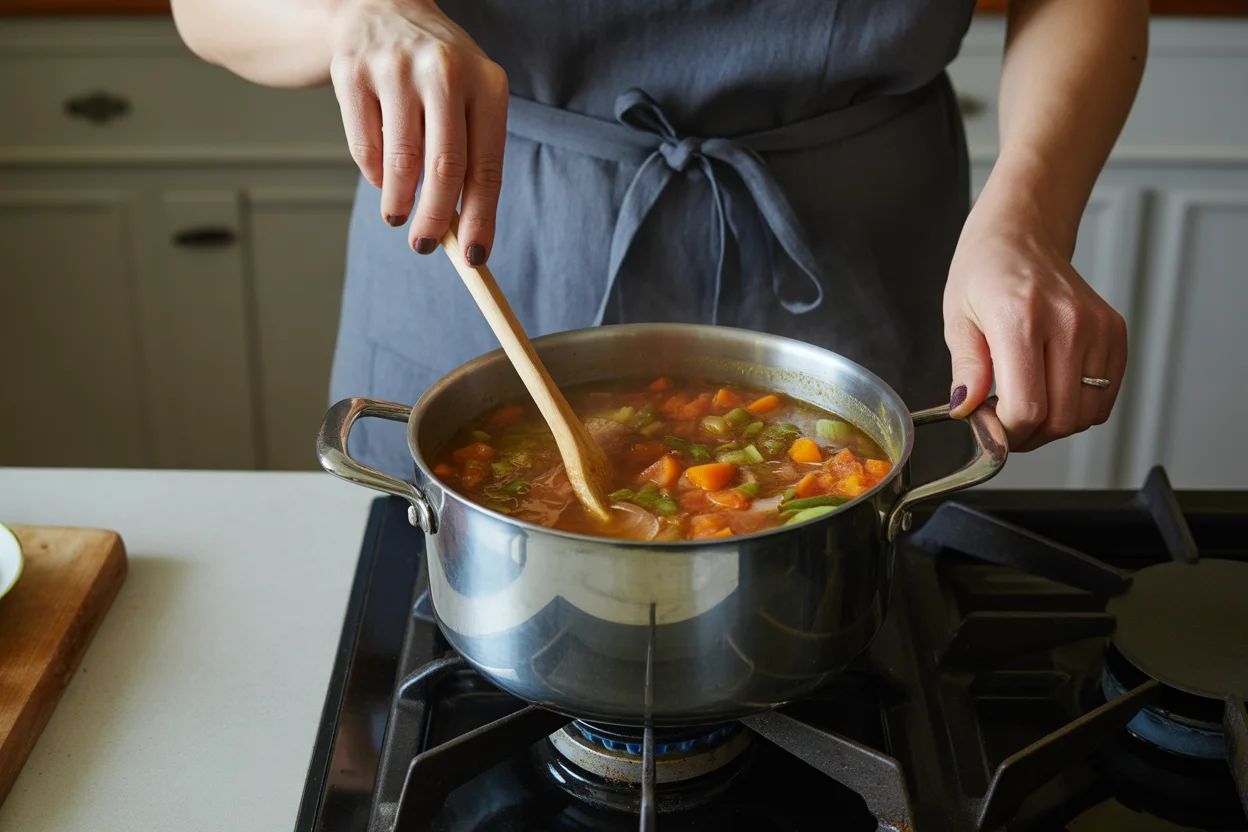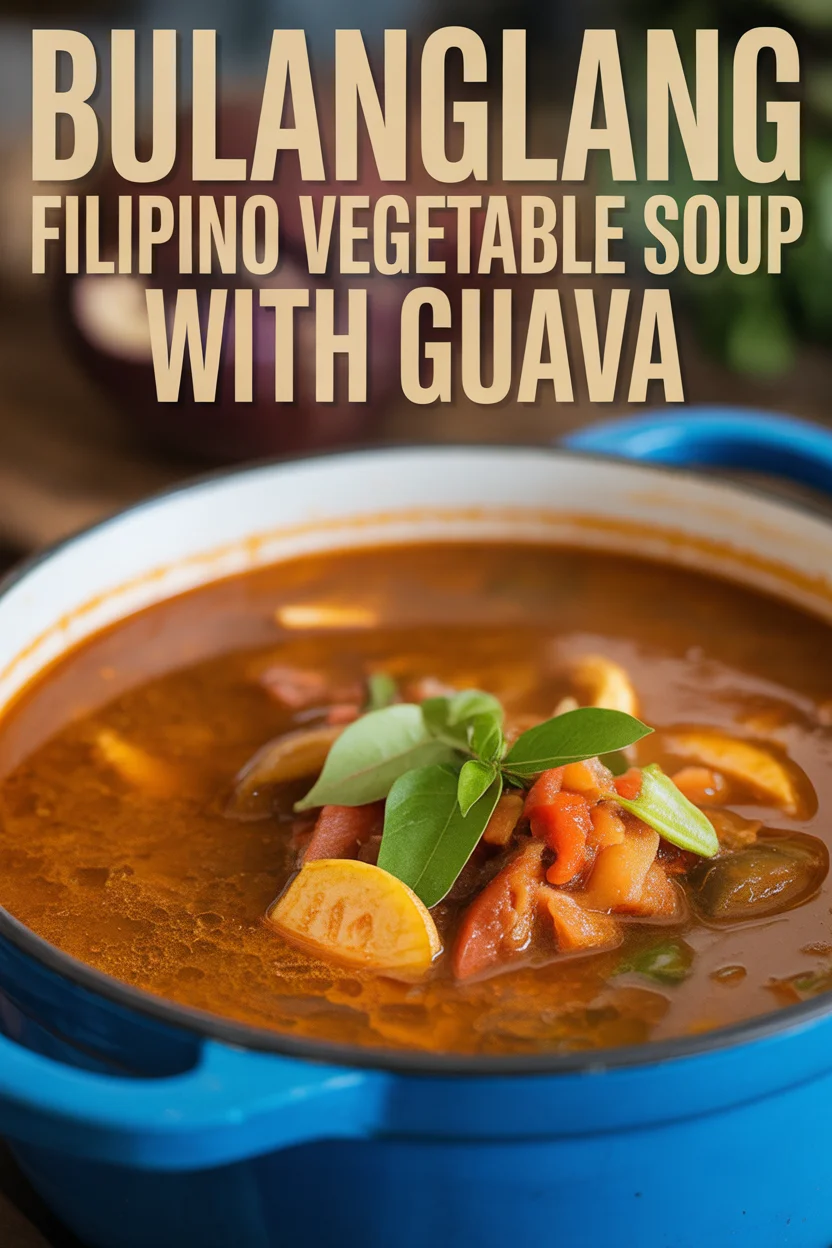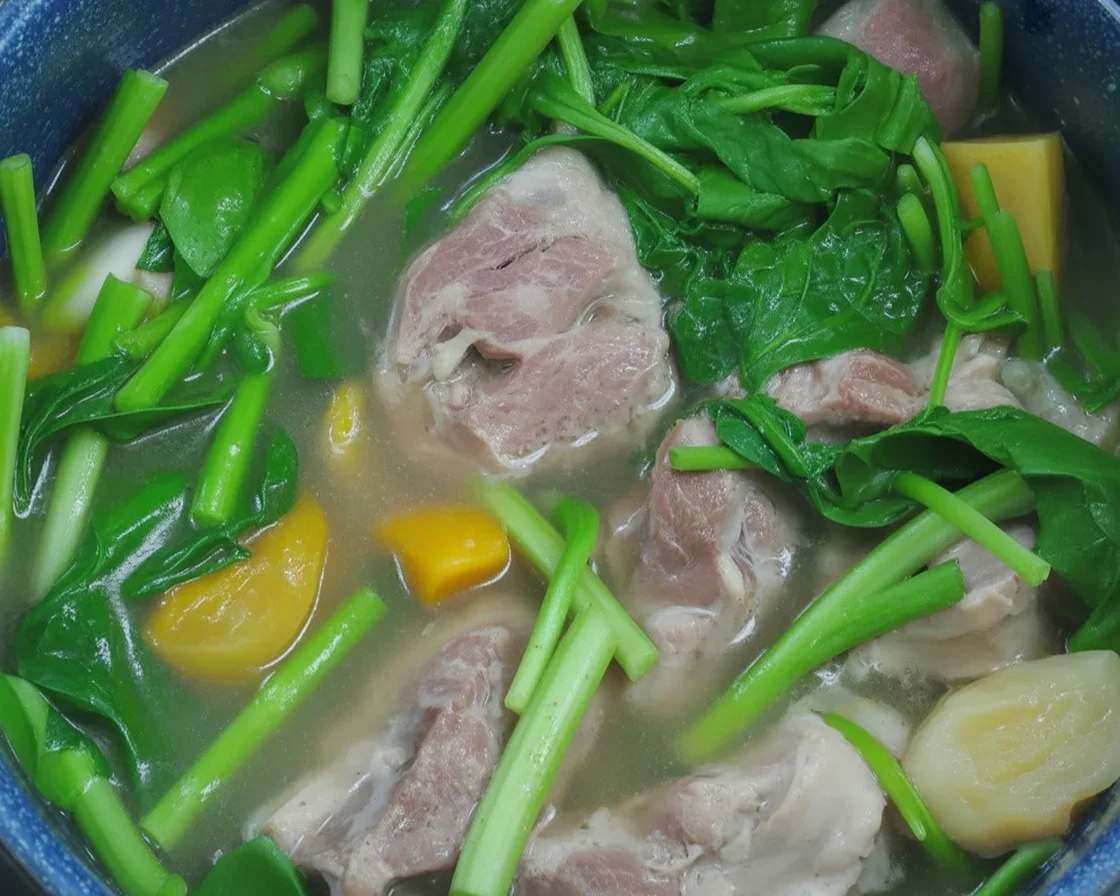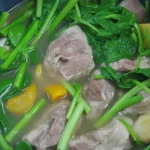- Introduction to bulanglang
- Choosing fresh vegetables
- Preparing guava broth
- Cooking vegetables
- Seasoning
- Serving hot
- Nutritional benefits
- Common Questions
- Ready for Soup That’s Pure Pinoy Comfort?
Filipino bulanglang is honestly the kind of dish you think of when you just want something warm, healthy, and straight-up comforting. Ever have one of those days when you’re staring at your fridge, thinking, “Do I seriously have to cook?” I’ve totally been there. For folks who want something easy, nutritious, and full of flavor (but not a million steps!), this classic Filipino vegetable soup with guava just nails it. You get home, you’re starving, and you want things simple—think bulanglang. If you’re craving other hearty but fuss-free healthy Filipino recipes or want more family-friendly classics like bistek Tagalog, bulanglang is right up your alley.

Introduction to bulanglang
So what’s so special about bulanglang? Here’s the deal: it’s a vegetable soup (at its heart), but the big twist is all in the guava. Most people I know grew up with a version of this, especially if you’ve got roots in the provinces. The guava gives the broth this unexpectedly mellow, lightly sweet taste—not sugary, but different in the best way. The thing is, bulanglang is ridiculously flexible. You might’ve seen it called “pesa” or “laswa” in other spots, but the one with guava really rings true for folks from Batangas. When I make it, I go heavy on the local vegetables. It’s the ultimate “use what you have” meal, and it doesn’t ask for fancy ingredients (whew). Honestly, you don’t need to be a pro to whip this up. Most families have their version—my lola used to toss in whatever was looking decent at the market.
“My mom says it’s the only soup that could convince her to eat more veggies when she was a kid. Now it’s a go-to hit even for my picky brother.”

Choosing fresh vegetables
Picking the right veggies for bulanglang is way easier than most people think. Don’t stress about sticking to an exact list. I usually grab whatever’s looking the freshest at the palengke or grocery. Sitaw (yardlong beans), talong (eggplant), kalabasa (squash), okra, and sometimes ampalaya (bitter melon)—they’re all solid choices.
If guava’s in season, grab a few that are more on the firm side. Not the ultra-ripe ones, trust me on this. If you have malunggay (moringa leaves) or pechay, toss those in too. Just avoid wilted veggies. Limp cucumber? No thanks—not here! You can swap in green papaya or use whatever greens you like (kangkong works, too). To me, fresher is always better. If your fingers leave little dents in the vegetable skin, nah, skip it. Keep it local. Sometimes imported stuff tastes a little sad compared to homegrown. Ask the vendor for the “pang-sopas” ones—they know what you mean!

Preparing guava broth
Here’s where the magic starts. The guava transforms regular old broth into something so comforting, you’ll wonder why you never tried it before. Wash a few guavas (about three medium-sized ones should work), then slice them up—don’t worry about the seeds, you’ll strain them out anyway.
Boil these slices in water until they’re fork-soft. Squish them (gently, please, so you don’t spray the whole place with guava pulp—learned that the hard way) with a ladle to release all that flavor. Next, strain out the chunks and seeds—what you want to keep is that cloudy, almost golden broth. It smells fantastic, and it’s the core of bulanglang’s unique taste. If fresh guava’s impossible to find, frozen guava (or sometimes a little guava paste) will do. Cheating? Maybe. But it still works.
Cooking vegetables
Cooking the veggies for bulanglang is mostly about timing. Don’t just dump everything in all at once—you’ll end up with mushy soup, and nobody wants that. Start by cooking the tougher veggies (like kalabasa and sitaw) in the guava broth first. Give them a few minutes so they soften a little.
Add the more delicate vegetables after, maybe 5–8 minutes in. Stuff like okra, talong, and leafy stuff goes toward the end. If you throw in malunggay or spinach, really, wait until the last minute so they don’t just disappear. I use a plain old kawali or regular pot for this. Let the broth bubble but don’t go into a wild boil. Simmering helps everything keep its shape and color. Oh, and if you want a little meat for extra oomph? Add some fried fish or pork belly, but honestly, it’s not needed for flavor. You just do you.
Seasoning
Now comes the part where you put your own stamp on bulanglang. The soup is simple, so seasoning really shines. I start with a bit of fish sauce or salt—yep, nothing high-tech. Some folks throw in a dash of black pepper. Occasionally, I’ll sneak in a clove of garlic or a little sliced onion. My lola actually preferred her bulanglang plain, to let the guava pop through.
Taste as you go! I know, everyone says that, but really. The guava makes the soup slightly tangy and sweet, so don’t oversalt. A squeeze of calamansi (Filipino lime) before serving is kind of genius, though that’s not traditional for everyone. If it ends up a little bland, just add a splash more fish sauce instead of salt, for that extra umami kick.
Serving hot
Okay, this part honestly makes the meal. You want bulanglang served piping hot—like “cradle the bowl” warm. It just hits better that way, especially on rainy days (I mean, hello, perfect Netflix-and-soup combo). Make sure to serve it right after cooking so the vegetables don’t go soggy.
Here are some simple ways I enjoy it:
- Ladle bulanglang over hot garlic fried rice—seriously, life-changing.
- Pair it with crispy fried fish or grilled pork BBQ for the full “timplado” (flavorful) meal.
- Add a side of soy sauce with chili and calamansi for dipping—just adds zing.
It’s a forgiving soup—go heavy or light on the broth depending on your mood. If you’re feeding picky eaters, just leave out the ampalaya (nobody will complain, ever).
Nutritional benefits
One thing I absolutely love about bulanglang is how it packs a punch, nutrition-wise. You get plenty of vitamins and minerals from all those fresh veggies. The guava alone is loaded with Vitamin C (and, who knew, a bit of fiber too!). Leafy greens like malunggay add iron and potassium—way better than any “healthy in a box” fad.
It’s low in fat and pretty light on calories, so you don’t finish eating and feel like snoozing on your couch five minutes later. Most of the time, I feel pretty good eating bulanglang because it covers most of what I need in a day—protein (if you add fish or pork), veggie goodness, and that cozy feeling you get from home-style food. You seriously can’t lose with this one.
Common Questions
Is it okay to use unripe guava for bulanglang?
Totally fine. Unripe guava actually gives that perfect tang. Just avoid super hard or bitter ones.
Can I store leftovers in the fridge?
Yup. Just let it cool first, then store in a container. Heat extra veggies gently though, or they’ll get mushy.
What other vegetables can I use?
Most local greens, papaya, even young corn or gabi (taro). It’s a “clear the fridge” soup—get creative.
Is bulanglang a vegetarian dish?
It absolutely can be. Skip fish sauce and any meat. Use salt or mushroom seasoning for the vegan route!
Can I use pork or fish in bulanglang?
Definitely. Fried fish (tilapia) or a little pork belly—go for it if you want a heartier meal.
Ready for Soup That’s Pure Pinoy Comfort?
So, if you’ve been hungry for something homey and healthy, bulanglang won’t disappoint. This Filipino vegetable soup with guava is the real deal: easy, soothing, and loaded with local flavor. Add a little twist, skip the meat if you like, and it’ll still taste like a five-star restaurant—well, a cozy one! Seriously, if you’re exploring Pinoy classics, check out Bulanglang na Gulay (Batangas) – Panlasang Pinoy for regional tips, or see how pork ups the game in Pork Bulanglang – Kawaling Pinoy. For another friendly step-by-step, Bulanglang Recipe at Panlasang Pinoy always helps. Soup’s on—give it a shot, and your family just might ask for seconds.

Bulanglang
Ingredients
For the guava broth
- 3 medium guavas Choose firm ones for best flavor.
- 6 cups water For boiling guavas.
For the vegetables
- 1 cup kalabasa (squash) Cut into bite-sized pieces.
- 1 cup sitaw (yardlong beans) Cut into 2-inch lengths.
- 1 cup okra Trimmed and left whole.
- 1 medium talong (eggplant) Sliced.
- 1 cup malunggay (moringa leaves) Added at the end of cooking or as preferred.
- 1 cup ampalaya (bitter melon) Optional based on taste preference.
For seasoning
- 2 tablespoons fish sauce Adjust to taste.
- 1 teaspoon black pepper Optional, based on taste.
- 1 clove garlic Minced, optional.
- 1 small onion Sliced, optional.
Instructions
Preparing Guava Broth
- Wash the guavas and slice them without removing the seeds.
- Boil sliced guavas in water until fork-soft.
- Use a ladle to squish the guava slices and release the flavor.
- Strain out the chunks and seeds to keep the broth.
Cooking the Vegetables
- Add kalabasa and sitaw to the guava broth and simmer for 5-8 minutes.
- Add more delicate vegetables like okra, talong, and malunggay towards the end.
- Keep the broth simmering; avoid boiling to prevent mushy veggies.
Seasoning
- Season with fish sauce, black pepper, and optionally add garlic and onion.
- Taste as you go, adjusting seasoning to your preference.
Serving
- Serve hot, preferably ladled over garlic fried rice or paired with fried fish.
- Optionally, serve with soy sauce, chili, and calamansi for dipping.

